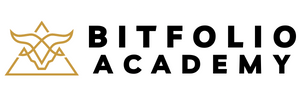What are NFTs and How do they work?
Who, what, where, when, and why?
Non-Fungible Tokens (NFTs) are digital assets that are unique and non-interchangeable. Each NFT has a unique ID that is stored and tracked on a blockchain. You can own them. You can possess them in your crypto wallet, and you can transfer them to another wallet without the need for any third party. In theory, an NFT should be hard to steal and then resell because the ownership can be tracked on a blockchain.
People started trading NFTs in 2017 when they were created. NFTs crypto were created by Ethereum developers because they wanted to create a digital asset class that was not fungible tokens. A fungible token is like a dollar bill. One dollar bill can be exchanged for another–they are all the same. But, an NFT is different. They are non-fungible, which means they cannot be exchanged for other assets on a one-to-one basis. An NFT’s meaning is that each NFT is unique.
But, they can be bought and sold. They can represent anything from digital art, music, videos, tweets, virtual real estate, and more. An NFT can be created by anyone who has access to a blockchain that supports the creation of NFTs.
How do NFTs work? They work the same way as fungible tokens. They can be bought and sold, held in your wallet or transferred to another wallet. And, they have the same security profile as a fungible token.
NFTs gained mainstream attention, especially, in 2021 when several high-profile NFT sales made headlines. For example, a digital artwork by the artist Beeple sold for $69 million in March 2021. This was the most expensive NFT ever sold. Twitter CEO Jack Dorsey sold his first tweet as an NFT for $2.9 million in the same month. In 2021, most NFTs were bought and sold on OpenSea, the #1 NFT marketplace on the Ethereum blockchain.
So, we have answered the question “What is an NFT?” Let’s answer the “Why” question.
What are the benefits of owning an NFT?
When you think of an NFT, what is the first thing that comes to mind? A bored ape from the Bored Ape Yacht Club? Or perhaps a Cyberpunk image. Art is useful because we appreciate it. Art is a form of self-expression and a form of cultural expression. It can be a commentary on society, and it is usually aesthetically pleasing. We admire it. We want to possess it. And, with NFTs, we can own them and possess them digitally in our crypto wallets.
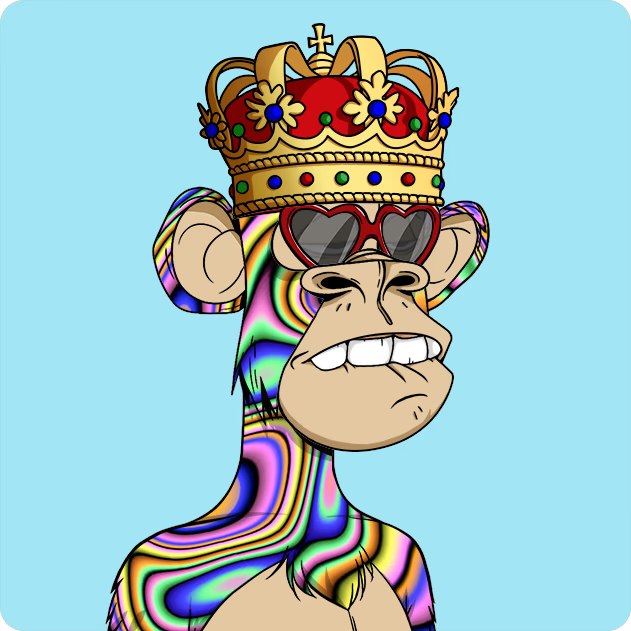
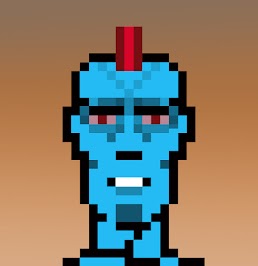
In order for something to have value, it has to be useful. It needs to benefit the owner. One way that NFTs are useful is that they have created a new way for creators, like artist and musicians, to monetize their work. Another way that you may not have considered is proving that an asset is authentic. Since an NFT lives on a blockchain, you can trace the digital asset back to its original owner. Let’s take for example a Gucci purse. Gucci can embed a chip inside of the purse, and that chip can be scanned at the factory and associated with an NFT. So, this purse is now on a blockchain because the ID in the purse is not stored on a blockchain as an NFT. When the factory ships the purse to a distributor, they transfer the ownership on the blockchain to the distributor. Finally, if you were to buy the purse at Bloomingdales, you could scan the chip and trace the ownership all the way back to the Gucci factory. Thereby, you could validate the authenticity of the purse–it is not fake; it’s not a counterfeit purse. It’s the real thing.
But, so far, we have just scratched the surface of why NFTs are useful and why NFTs are revolutionizing the digital world. NFTs are a revolution because they have a variety of uses case. And, more and more uses for NFTs are being discovered every day. But, I want to focus on five uses for nonfungible tokens. NFTs are revolutionizing the digital world because they are useful (1) in art, (2) in online games, (3) in loyalty/rewards programs, for community building, (4) in supply-chain tracking, and (5) in the tokenization of assets. I would like to examine each of these use cases in turn.
NFTs as Works of Art
As I mentioned, NFTs are a new way for artists to monetize their work. NFTs and NFT marketplaces like OpenSea are disrupting the traditional art market by providing a new way for artists to showcase their talent and sell their works of art.
NFTs are making it easier for artists to sell their works of art. Anyone with access to a blockchain platform can create an NFT and sell an NFT. In this way, they have the potential to democratize the art world by allowing a wider range of creators to participate in the market.
NFTs are unique and non-interchangeable. And, they can be sold directly over the Internet. This is a major advantage over traditional art. Selling an NFT in an NFT marketplace allows the artist to receive payment directly for their artwork. It also allows them to earn a commission or royalty when the NFT is resold. So, NFT marketplaces give artists more control over the distribution of their work.
NFTs also provide a new way for collectors to invest in art. NFTs are unique in that they are held in a wallet address. From the comfort of one’s living room, a collector can purchase and own works of art–it is easy and convenient.
Examples of NFTs as Art Collectibles
As early as 2017, collectors start buying NFTs. CryptoPunks are a collection of 10,000 unique digital art pieces created by Larva Labs. In 2017, the collection was sold for over $17 million. The success of the sale was in part due to the fact that the collection was limited to 10,000 pieces. In 2018, the “CryptoKitties” collection broke the Ethereum blockchain. There was so much demand for these digital cats that Ethereum could not handle the load. In 2018, the collection was sold for over $12 million.
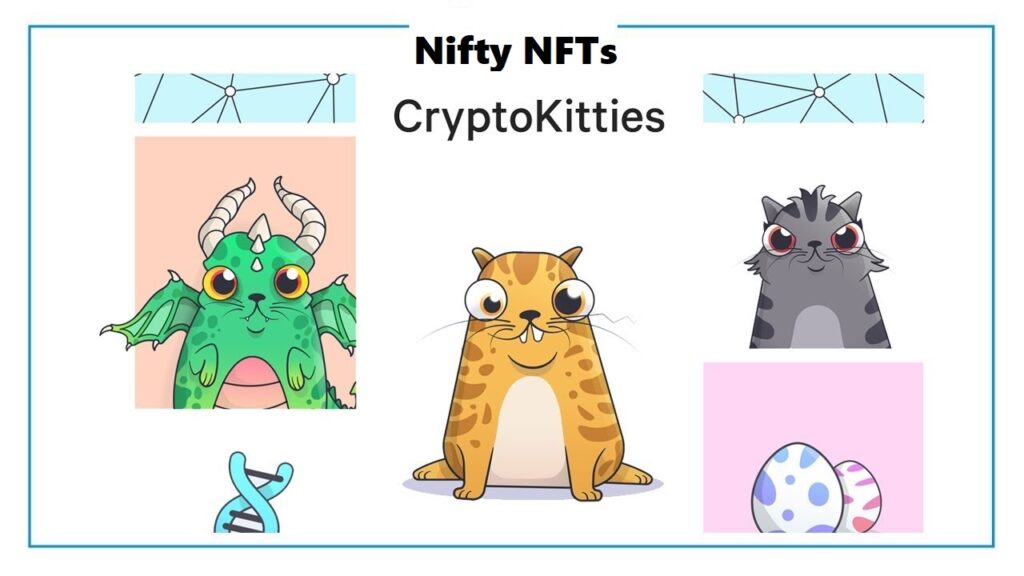
More recently, in 2021, Canadian musician Grimes sold a collection of 10 digital art pieces for nearly $6 million. An NFT digital art piece by British artist Trevor Jones sold for over $3 million. That piece features a 3D rendering of an angel with a Bitcoin symbol on its chest. Also in 2021, CryptoPunk #7523 sold for over $7.5 million. And, a collection of 50 NFT digital art pieces by the anonymous artist Pak sold for nearly $17 million.
These are a few examples of successful NFT art sales. And, it demonstrates a growing interest in this new type of digital ownership and value.
NFTs in Online Games
NFTs are used in online games to represent ownership of digital items, such as characters, weapons, armor, skins, and other in-game assets. NFTs are stored on a blockchain, which allows them to be securely tracked and transferred between players. Next, we will explore how NFTs are used in online games.
NFTs are used in online games to create a more immersive and engaging experience for players. Players often enjoy building their own collections of digital assets. NFTs provide players with a sense of ownership over their digital assets. And, NFTs can create a sense of scarcity and rarity. Players can then show off their rare items to other players, which can increase their social status within the game’s community. And, marketplaces have emerged so that players buy, sell, and trade their NFTs.
NFTs have the potential to revolutionize the online gaming industry. Sometimes, owning an NFT will give you special powers in the game. NFT ownership can give players a competitive advantage in the game. So, nonfungible tokens can help to create a more vibrant and competitive gaming environment.
Examples of Using NFT in Online Games
CryptoKitties was one of the first NFT-based games to gain mainstream attention. The game allowed players to collect and breed virtual cats, with each cat represented by an NFT. At its peak, some CryptoKitties sold for over $100,000.
Axie Infinity is a blockchain-based game where players can collect, breed, and battle creatures called Axies. Each Axie is represented by an NFT, which can be bought and sold on various marketplaces. Axie Infinity has become extremely popular, with some Axies selling for tens of thousands of dollars.
Decentraland is a virtual world where players can buy, sell, and trade virtual land and buildings using NFTs. MANA is the virtual currency in Decentraland. With MANA, you can buy virtual real estate in Decentraland, and the land is highly sought after. Some parcels of land have sold for millions of dollars.
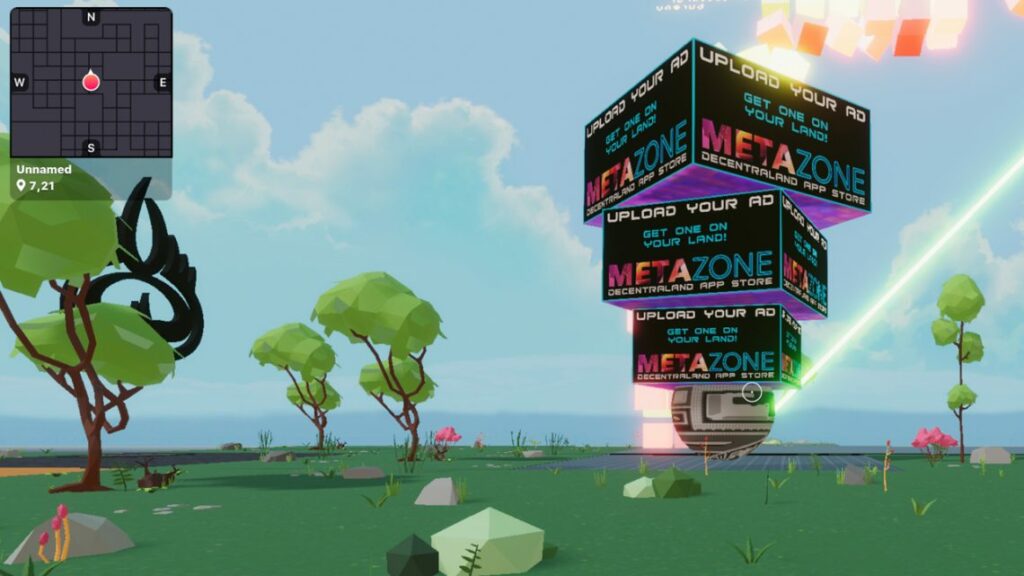
Gods Unchained is a digital collectible card game that uses NFTs to represent each card. The game has gained a large following, and some rare cards have sold for thousands of dollars.
The Sandbox is a blockchain-based game where players can build and monetize their own virtual worlds using nonfungible tokens.
The use of NFTs in online games is still a relatively new and evolving concept, but it has the potential to revolutionize the gaming industry.
How are NFTs used in loyalty or rewards programs?
NFTs are becoming increasingly popular in loyalty or rewards programs. They provide a secure and transparent way for businesses to track and reward customers for their loyalty. Here are some ways that they can be used effectively in rewards programs.
- Can be used to create digital collectibles that users can earn as rewards for their loyalty. These digital collectibles can be anything from virtual stickers and badges to rare and exclusive items that can be traded or sold on marketplaces.
- Can be used is to create exclusive rewards that are only available to a select group of users. For example, a brand could create an NFT that can only be earned by users who have made a certain number of purchases.
- Can be used to gamify loyalty and rewards programs. For example, users could earn NFTs for completing certain tasks or challenges, which could then be used to unlock exclusive rewards.
- Can be used to create personalized rewards for users based on their preferences and behavior. For example, a brand could create an NFT that represents a user’s favorite product or service, which could then be used to unlock exclusive rewards related to that product or service.
Overall, the use of NFTs in loyalty and rewards programs has the potential to create new opportunities for customer engagement and retention, while also providing users with unique and valuable rewards that they can’t get anywhere else.
Examples of Successful NFT Loyalty Programs
NBA Top Shot is a blockchain-based platform that allows users to buy, sell, and trade NFTs that represent specific moments from NBA games. The platform has gained a large following, with some nonfungible tokens selling for hundreds of thousands of dollars.
Binance, the leading cryptocurrency exchange, has created an NFT-based rewards program for its users. Users can earn NFTs by completing various tasks and challenges, which can then be traded or redeemed for other rewards.
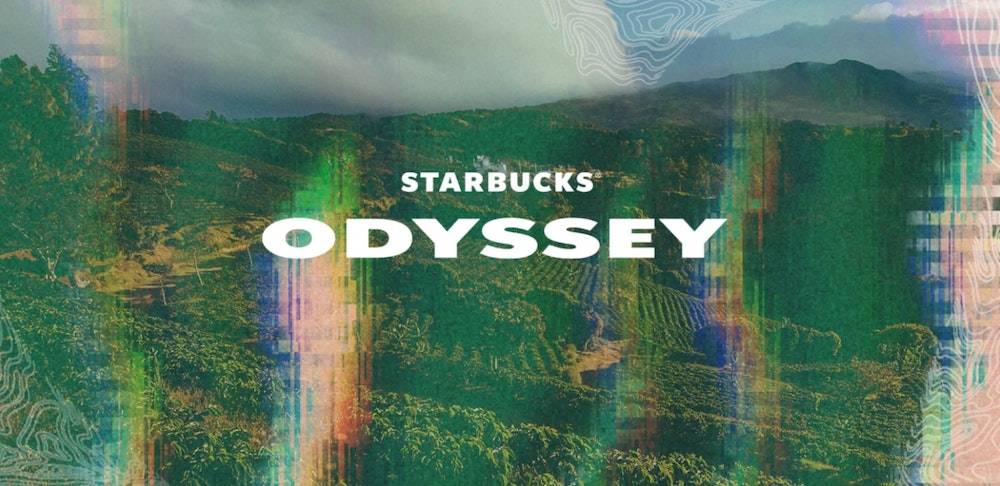
In December 2022, Starbucks launched a blockchain-based loyalty program called Starbucks Odyssey. The program is designed to offer customers a diverse set of rewards beyond the perks they can earn today, like free drinks. Customers can engage with interactive activities called “Journeys” that, when completed, allow members to earn collectible Journey Stamps, which is a less geeky word for NFTs. These Journeys are designed to promote the Starbucks brand and teach customers about coffee and the company’s history. Members can earn Stamps when they accumulate 500 points by completing activities such as in-store purchases or online activities. The Stamps also unlock special experiences. Customers can also buy the Stamps with a credit card. Starbucks Odyssey will also have a marketplace, where NFTs can be bought or sold, and users can earn points based on their rarity.
NFTs in supply-chain tracking
NFTs are used in supply-chain tracking to help improve transparency and traceability in the movement of goods and products through the supply chain. Each NFT can represent a specific item, and its unique digital identity can be tracked and verified as it moves through the supply chain.
What are the benefits of using a blockchain to track goods?
- First, blockchains are immutable or unchangeable. In a normal database, a database administrator can change records in a database table. This is not the case with a blockchain. Once the data is written, it is permanent. So, blockchains do not lie because they are immutable. So, by using an NFT, you have enhanced security. Blockchain technology is designed to be secure and tamper-proof.
- Greater trust: The use of blockchain and NFTs can help build trust between stakeholders in the supply chain. Trust is important for things like food or drugs.
- Improved transparency: By using a blockchain, every transaction is recorded on an immutable and transparent ledger. This allows stakeholders to track and trace goods as they move through the supply chain, ensuring that they are authentic and have not been tampered with.
- Increased efficiency: Blockchain and NFTs can help streamline the supply chain by automating processes and reducing paperwork.
Examples of successful NFT supply chains
When you pick up a steak at the grocery store and it has a label that says “grass-fed, local beef,” how do you know that to be true? Well, the rancher assigned an NFT to each of his cows, and as the cow moved through various stages of processing, transportation, and storage, the NFT can be updated with information at each step along the way. Not only could the customer at the grocery store trace the steak to the farm, but the customer could see when the cow was slaughtered and how long it took for the steak to wind up in the grocery store.
One example of NFTs being used in supply-chain tracking is the partnership between French wine producer Château Dauzac and blockchain platform Everledger. Château Dauzac used Everledger’s platform to create nonfungible tokens for each bottle of wine it produced. This allowed customers to trace the wine’s origin and production history, as well as verify its authenticity.
In 2018, a multistate outbreak of Ecoli-related illnesses linked to romaine lettuce started making headlines. People who bought romaine lettuce at Walmart were getting sick. Walmart was able to determine which farm the romaine lettuce was coming from. But, they had to throw out all of the lettuce because they could not trace the lettuce in the stores back to the farm.

In 2018, Walmart completed a food traceability pilot on the IBM Food Trust platform. Walmart was able to reduce the time required to trace a box of mangos back to its farm from 7 days to 2.2 seconds. Then, Walmart asked all its leafy green suppliers to join the Walmart Food Traceability Initiative so that Walmart could instantaneously trace every product back to its farm by production lot within a year. Today, the majority of Walmart’s leafy green suppliers are using blockchain technology to trace their products.
NFTs Used in the Tokenization of Assets
NFTs, with their unique properties and ability to be easily transferable and traded, make them an attractive tool for asset tokenization. For example, a real estate property could be tokenized by creating NFTs that represent ownership shares, which could be sold and traded by investors. Similarly, stock options, an insurance contract, and physical assets can be tokenized by creating NFTs that represent ownership.
The use of nonfungible tokens for asset tokenization provides several benefits.
- A public blockchain is a 24/7 marketplace for NFTs.
- It is a worldwide platform, so putting assets on a public blockchain could provide increased liquidity. Also, it would allow for smaller investors to participate in ownership.
- Since the assets are open-source smart contracts, there would be increased transparency in asset ownership.
The use of NFTs in the tokenization of assets has the potential to transform how assets are owned, traded, and invested in.
Examples of using NFTs to Tokenize Assets
One potential example comes from Mark Cuban, the owner of the Dallas Mavericks basketball team. The team sells season tickets every year. Each fan gets his own seat for the whole season. What if every seat in the arena could be tokenized as an NFT? What if every seat were sold to the highest bidder? Then, the seat would be the lifetime property of the owner. Then, the owner would be responsible for renting out the seat for the games. The seat owner could choose to go to the game, sell a ticket to the game, or sell the seat to someone else.
The next example is a real one. The Mirror Protocol is a decentralized platform that provides traders with access to buy and sell NFTs, which are synthetic, tokenized versions of stocks. Stocks that have been tokenized on Mirror include Microsoft, Apple and ETFs like Invesco QQQ Trust. The Mirror protocol allows users to buy and sell nonfungible tokens NFT stocks. It also allows users to provide liquidity to the liquidity pools, and to generate additional returns through staking.
Finally, Blackrock, the biggest asset manager in the world with close to $10 trillion in assets under management, is very interested in tokenizing its ETFs so that they can be traded 24/7 on a blockchain.
Conclusion
Options, derivatives, and insurance contracts are all financial instruments that can be tokenized with the use of NFTs. Tokenizing these instruments can provide a more secure, transparent, and a more efficient way to trade and manage these assets. Additionally, tokenizing real estate can provide a way to fractionalize ownership of a property, allowing more people to invest in real estate without having to purchase an entire property.
NFTs are proving to be a versatile technology with a wide range of potential applications. From digital art to the tokenization of options, derivatives, insurance contracts, real estate, and beyond, the possibilities for nonfungible tokens are seemingly endless. While some may view NFTs as a passing fad or an overhyped investment opportunity, the underlying technology has the potential to transform a wide range of industries and unlock new opportunities for creators, investors, and businesses alike. As the blockchain ecosystem continues to evolve and new use cases for nonfungible tokens are discovered, it will be fascinating to see how this innovative technology shapes the future of digital ownership and e-commerce.
“The Bitfolio Academy 500” is an NFT for the first 500 members of the Bitfolio Academy Coaching Community. Join the free membership at Bitfolio Academy, and I will send you a notification when the Bitfolio Academy 500 NFT is dropped.
FAQ
What is an NFT?
Non-Fungible Tokens (NFTs) are digital assets that are unique and non-interchangeable. Each NFT has a unique ID that is stored and tracked on a blockchain. You can own them. You can possess them in your crypto wallet, and you can transfer them to another wallet without the need for any third party. In theory, an NFT should be hard to steal and then resell because the ownership can be tracked on a blockchain.
What do NFTs actually do?
Some are merely appreciated as works of art, and they do not offer any additional use case other than being a collectible. Other nonfungible tokens offer a competitive advantage for holding the NFT. For example, Uniswap uses nonfungible tokens to represent ownership of liquidity by liquidity providers. Without the Uniswap LP NFT in your possession, you could not withdraw your liquidity from the smart contract. Likewise, if you transferred the ownership of your Uniswap LP NFT to someone else, you would no longer own the Uniswap liquidity.
Are NFTs a good investment? How much are NFTs worth?
This question seems to be a bit misguided because it seems to assume that all NFTs are collectibles. Collectibles are only one use case for NFTs. Some view NFTs like they view trading cards. However, this is just one use case. As I present in this article, there are many more use cases for NFTs and more and more use cases are being discovered or invented every day.
Are NFTs Safe?
NFTs are safe to own. Like any other token, you hold NFTs in your crypto wallet. They can be transferred to another wallet address, just like you would transfer any other coin or token. They have the same security profile as a regular, fungible token.
How Can I Buy NFTs?
There are many NFT marketplaces where you can buy, sell and mint (or create) NFTs. The largest and most popular NFT marketplace is OpenSea. Magic Eden is another popular one. Rariable is another.
How are NFTs made or minted (minting NFTs)?
One creates an NFT from a smart contract, which defines the characteristics of the NFT. The contract is deployed to a blockchain, and one executes the smart contract to create an NFT.
Once the smart contract is deployed on the blockchain, users can interact with it to mint their own NFTs. This typically involves sending a transaction to the smart contract, which triggers the creation of a new token with a unique token ID. The creator of the NFT can then transfer it to other users.
